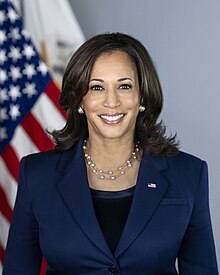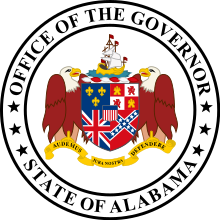| Main | Topics and categories | Tasks and projects |
The Politics portal
Politics (from Ancient Greek πολιτικά (politiká) 'affairs of the cities') is the set of activities that are associated with making decisions in groups, or other forms of power relations among individuals, such as the distribution of resources or status. The branch of social science that studies politics and government is referred to as political science.
It may be used positively in the context of a "political solution" which is compromising and non-violent, or descriptively as "the art or science of government", but also often carries a negative connotation. The concept has been defined in various ways, and different approaches have fundamentally differing views on whether it should be used extensively or in a limited way, empirically or normatively, and on whether conflict or co-operation is more essential to it.
A variety of methods are deployed in politics, which include promoting one's own political views among people, negotiation with other political subjects, making laws, and exercising internal and external force, including warfare against adversaries. Politics is exercised on a wide range of social levels, from clans and tribes of traditional societies, through modern local governments, companies and institutions up to sovereign states, to the international level.
In modern nation states, people often form political parties to represent their ideas. Members of a party often agree to take the same position on many issues and agree to support the same changes to law and the same leaders. An election is usually a competition between different parties.
A political system is a framework which defines acceptable political methods within a society. The history of political thought can be traced back to early antiquity, with seminal works such as Plato's Republic, Aristotle's Politics, Confucius's political manuscripts and Chanakya's Arthashastra. (Full article...)
Selected article
The monarchy of the United Kingdom is a system of government in which a hereditary monarch is the sovereign of the United Kingdom and its overseas territories. The terms British monarch and British monarchy may mean different things in different contexts beyond the United Kingdom. The present monarch is Queen Elizabeth II, who has reigned since 6 February 1952. The heir apparent is her eldest son, Charles, Prince of Wales and Duke of Rothesay. They and the Queen's husband and consort, Prince Philip, Duke of Edinburgh, undertake various public duties in accordance with their positions. Elizabeth II is Head of the Commonwealth and also reigns as head of state of 15 other Commonwealth countries. This developed from the former colonial relationship of these countries to Britain, but they are now independent and the monarchy of each is legally distinct.
Featured picture

The resignation letter of U. S. President Richard M. Nixon on August 9, 1974 during the Watergate scandal.

there have been 23 members appointed to the Cabinet of the United States who had been born outside the present-day United States.
Alexander Hamilton, one of the Founding Fathers who signed the U.S. Constitution, was the first cabinet member to be born outside of the United States. President George Washington appointed Hamilton, born in Nevis in 1755 or in 1757, as the United States' first Secretary of the Treasury in 1789. Irish-born James McHenry, whom Washington appointed as Secretary of War in 1796 and who served in the same post in John Adams's administration, was the other foreign-born individual in Washington's cabinet. (Full article...)

The papal conclave of 2005 was convened to elect a pope, the leader of the Catholic Church, to succeed Pope John Paul II following his death on 2 April 2005. In accordance with the apostolic constitution Universi Dominici gregis, which governed the vacancy of the Holy See, only cardinals who had not passed their 80th birthday on the day on which the Holy See became vacant (in this case, cardinals who were born on or after 2 April 1925) were eligible to participate in the conclave. Although not a formal requirement, the cardinal electors invariably elected the pope from among their number. The election was carried out by secret ballot (Latin: per scrutinium).
Of the 183 members of the College of Cardinals at the time of John Paul II's death, there were 117 cardinal electors who were eligible to participate in the subsequent conclave. Two cardinal electors did not participate, decreasing the number in attendance to 115. The number of votes required to be elected pope with a two-thirds supermajority was 77, or (only in the event of a protracted deadlock) a simple majority of 58. (Full article...)

The Bharatiya Janata Party (BJP) is one of the two major parties in the political system of the Republic of India, the other being the Indian National Congress (INC). , it is the country's largest political party in terms of representation in the national parliament. Established in 1980, the BJP's platform is generally considered as the right-wing of the political spectrum. , 54 BJP leaders have held the position of a chief minister out of which thirteen are incumbent.
A chief minister is the head of government of each of the twenty-eight states and two union territories (UTs) (Delhi and Puducherry). According to the Constitution of India, at the state-level, the governor is de jure head, but de facto executive authority rests with the chief minister. Following elections to the state legislative assembly, the governor usually invites the party (or coalition) with a majority of seats to form the government. The governor appoints the chief minister, whose council of ministers are collectively responsible to the assembly. The chief minister's term is usually for a maximum of five years, with the confidence of the assembly's confidence. There are no limits to the number of terms the chief minister can serve. (Full article...)
Eight of Arizona's fifteen counties are named after various Native American groups that are resident in parts of what is now Arizona, with another (Cochise County) being named after a native leader. Four other counties, Gila County, Santa Cruz County, Pinal County, and Graham County, are named for physical features of Arizona's landscape: the Gila River, the Santa Cruz River, Pinal Peak, and Mount Graham, respectively. Another county, La Paz County, is named after a former settlement, while the final county, Greenlee County, is named after one of the state's early pioneers. (Full article...)
- Lower Canada held 15 elections for its Legislative Assembly, from 1792 to 1835;
- Upper Canada held 13 elections to its Legislative Assembly, from 1792 to 1836;
- the Province of Canada held 8 elections for its Legislative Assembly from 1841 to 1863;
- New Brunswick's first 21 elections, beginning in 1785 (the 21st Legislative Assembly of New Brunswick was elected in 1866, one year before Confederation, and continued until 1870, three years after Confederation);
- Nova Scotia's first 22 elections, beginning in 1758;
- Prince Edward Island's first 25 elections, beginning in 1773; and
- Newfoundland's first 29 elections, beginning in 1832.
The most recent election is shown with a box limited to five years of government, as this is the maximum length of office, as set by the constitution. However, elections can be called at any time by an incumbent government. The federal government, nine provinces, and one territory have changed to fixed election dates every four years. For these legislatures, the box is shown as running until the next scheduled election, but one could still be earlier if the government falls due to a motion of no confidence. Nova Scotia and Yukon do not have fixed election dates in this matter. (Full article...)
Alberta uses a unicameral Westminster-style parliamentary government, in which the premier is the leader of the party that controls the most seats in the Legislative Assembly. The premier is Alberta's head of government, while the king of Canada is its head of state and is represented by the lieutenant governor of Alberta. The premier picks a cabinet, usually from the elected members of the Legislative Assembly, to form the Executive Council of Alberta, and presides over that body. (Full article...)

Thirteen first ladies of the United States have written a total of twenty-two memoirs. The first lady is the hostess of the White House, and the position is traditionally filled by the wife of the president of the United States, with some historical exceptions. Every memoir by a first lady published in the 20th and 21st centuries has been a bestseller, at times outselling those of their presidential husbands.
In the early 1800s, Abigail Adams had her correspondence published as Letters of Mrs. Adams, the Wife of John Adams, and Louisa Adams "made several attempts at an autobiography", though she never sought to publish them. The Memoirs and Letters of Dolley Madison, Wife of James Madison, President of the United States were published in 1886 but were actually edited by Lucia Cutts and written by Dolley Madison's niece Mary Cutts. (Full article...)
Many of the 21 countries listed here typically have had a long-standing agreement with a former colonial or protecting power; one example of the latter is the agreement between Monaco and France, which has existed for at least 300 years.
Similarly, the Compact of Free Association countries of the Federated States of Micronesia (FSM), the Marshall Islands, and Palau rely on the United States for their defence. They ensure their national security concerns are addressed through annual Joint Committee Meetings to discuss defence matters with the U.S. Indo-Pacific Command. Andorra has a small army, and can request defensive aid if necessary, while Iceland has a unique agreement since 1951 with the United States which requires them to provide defence to Iceland when needed, although permanent armed forces have not been stationed there since 2006. (Full article...)
The Cabinet of the United States, which is the principal advisory body to the President of the United States, has had 35 African-American members altogether, with one of them serving in multiple different positions for a total of 36 cabinet appointments. Of that particular number, 25 different Black individuals held a total of 26 permanent cabinet posts, serving as Vice President or head of one of the federal executive departments, and 10 more held cabinet-level positions, which can differ under each president; no one officeholder served in both cabinet and cabinet-rank roles. The U.S. Census Bureau defines African Americans as citizens or residents of the United States who have origins in any of the black populations of Africa. The term is generally used for Americans with at least partial ancestry in any of the original peoples of sub-Saharan Africa. During the founding of the federal government[broken anchor], African Americans were consigned to a status of second-class citizenship or enslaved. No African American ever held a cabinet position before the civil rights movement or the signing of the Civil Rights Act of 1964, which banned discrimination in public accommodations, employment, and labor unions.
Robert C. Weaver became the first African-American to serve in a president's cabinet when he was appointed Secretary of Housing and Urban Development by President Lyndon B. Johnson in 1966. Patricia Roberts Harris was the first black woman to serve in a presidential cabinet when she was named to the same position by President Jimmy Carter in 1977. Two years later, Carter tapped her for Secretary of Health and Human services, thus making her the first African-American to hold two different cabinet positions. (Full article...)

The Government of Ireland is the cabinet that exercises executive authority in the Republic of Ireland. Its ministers are collectively responsible for the Departments of State administered by the members of the Government.
, twenty-two women have served as cabinet ministers in governments of the Republic of Ireland and its predecessors the Irish Free State (1922–1937) and the Irish Republic (1919–1922). After a 58-year gap between the first and second women ministers, there has been at least one woman in all cabinets since December 1982. No woman has ever been Taoiseach (prime minister), but four women have served as Tánaiste (deputy prime minister). (Full article...)
The prime minister of Luxembourg (Luxembourgish: Premierminister vu Lëtzebuerg; French: Premier ministre luxembourgeois; German: Premierminister von Luxemburg) is the head of government of Luxembourg. The prime minister leads the executive branch, chairs the Cabinet and appoints its ministers.
Since 1989, the title of Prime Minister has been an official one, although the head of the government had been unofficially known by that name for some time. Between 1857 and 1989, the prime minister was styled the President of the Government, with the exception of the 25-day premiership of Mathias Mongenast. Before 1857, the prime minister was the President of the Council. In addition to these titles, the prime minister uses the title Minister of State, although this is usually relegated to a secondary title. (Full article...)
The governor of Alabama is the head of government of the U.S. state of Alabama. The governor is the head of the executive branch of Alabama's state government and is charged with enforcing state laws.
There have officially been 54 governors of the state of Alabama; this official numbering skips acting and military governors. The first governor, William Wyatt Bibb, served as the only governor of the Alabama Territory. Five people have served as acting governor, bringing the total number of people serving as governor to 59, spread over 63 distinct terms. Four governors have served multiple non-consecutive terms: Bibb Graves, Jim Folsom, and Fob James each served two, and George Wallace served three non-consecutive periods. Officially, these non-consecutive terms are numbered only with the number of their first term. William D. Jelks also served non-consecutive terms, but his first term was in an acting capacity. (Full article...)
The governor of Ohio is the head of government of Ohio and the commander-in-chief of the U.S. state's military forces. The officeholder has a duty to enforce state laws, the power to either approve or veto bills passed by the Ohio General Assembly, the power to convene the legislature and the power to grant pardons, except in cases of treason and impeachment.
There have been 64 governors of Ohio, serving 70 distinct terms. The longest term was held by Jim Rhodes, who was elected four times and served just under sixteen years in two non-consecutive periods of two terms each (1963–1971 and 1975–1983). The shortest terms were held by John William Brown and Nancy Hollister, who each served for only 11 days after the governors preceding them resigned in order to begin the terms to which they had been elected in the United States Senate; the shortest-serving elected governor was John M. Pattison, who died in office five months into his term. The current governor is Republican Mike DeWine, who took office on January 14, 2019. (Full article...)
Selected quote
Selected biography
Rebeca Elvira Delgado Burgoa (born 1 June 1966) is a Bolivian academic, lawyer, magistrate, and politician who served as president of the Chamber of Deputies from 2012 to 2013. As a member of the Movement for Socialism, she served as a party-list member of the Chamber of Deputies from Cochabamba from 2010 to 2014. Prior to her election to the lower chamber, Delgado served as a party-list member of the Constituent Assembly from Cochabamba from 2006 to 2007 and was vice minister of government coordination from 2008 to 2009. Delgado's near-decade-long political and legislative tenure was preceded by a fifteen-year career as a public servant, during which time she worked as a public defender and examining magistrate, was a magistrate on the Departmental Electoral Court of Cochabamba, and served as the Ombudsman's Office's delegate for the fight against corruption in Cochabamba.
Did you know (auto-generated) -

- ... that after criticizing the political patronage system, John Silva Meehan was hired as Librarian of Congress through "purely an act of political patronage"?
- ... that Nigeria's Muslim–Muslim ticket challenges the norm of religious balance in politics?
- ... that Nargess Eskandari-Grünberg, the new mayor of Frankfurt, gave birth to her first child while a political prisoner in the wake of the Iranian Revolution?
- ... that Prawoto Mangkusasmito did not complete law school before the Japanese invaded because he was too busy with student and political organizations?
- ... that Nobel laureate Thomas Mann reportedly did not want his Reflections of a Nonpolitical Man to be translated into English during his lifetime due to its chauvinistic content?
- ... that Denpasar mayor I Gusti Ngurah Jaya Negara became active in politics after he was laid off from a bank due to the Asian financial crisis?
More did you know...
- ...that the first phase of Mitt Romney's 2012 U.S. presidential campaign was announced via a video message?
- ...that the 1968 pamphlet Is the School House the Proper Place to Teach Raw Sex? claimed that sex education was a Communist conspiracy?
- ...that the American Society of Magazine Editors book The Best American Magazine Writing 2007 features investigative journalism about the Beslan school hostage crisis and survivors of Agent Orange?
- ...that the Libyan opposition has embraced "Zenga Zenga", an Israeli-created auto-tuned song and viral YouTube video that parodies Libyan ruler Muammar Gaddafi (pictured)?
- ...that the Brown Dog affair, an Edwardian era vivisection controversy, led to massive riots?
- ...that the controversial Iraq De-Ba'athification policy banned anyone affiliated with the Ba'ath Party from working in the public sector?
In this month
- June 28, 2004 - Canadian federal elections occur; the Liberal party loses its absolute majority.
News and Current events
- August 11: 4 local government areas in New South Wales, Australia locked down after COVID-19 case
- August 11: Australia: AstraZeneca vaccine access expanded by Victorian government
- August 1: Australia: Victorian lockdown lifted
- July 29: Tunisia's president dismisses prime minister, suspends parliament
- July 25: Australia: Wikinews interviews Reg Kidd, mayor of the City of Orange, about COVID-19 lockdown and local government
- July 23: South Australia enters week-long lockdown to contain COVID-19 Delta variant spread
- July 21: Technological University Dublin senior lecturer Dr Lorcan Sirr speaks to Wikinews on housing market in Ireland
- July 21: Three rural councils in New South Wales, Australia enter 7-day lockdown
- July 21: Australia: Victoria lockdown extended by a week with 85 active cases recorded
- July 15: California governor signs new state budget, eligible Californians to get stimulus payments
Topics and categories
General images
Related portals
Associated Wikimedia
The following Wikimedia Foundation sister projects provide more on this subject:
-
 Commons
Commons
Free media repository -
 Wikibooks
Wikibooks
Free textbooks and manuals -
 Wikidata
Wikidata
Free knowledge base -
 Wikinews
Wikinews
Free-content news -
 Wikiquote
Wikiquote
Collection of quotations -
 Wikisource
Wikisource
Free-content library -
 Wikiversity
Wikiversity
Free learning tools -
 Wiktionary
Wiktionary
Dictionary and thesaurus

















































Recent Comments